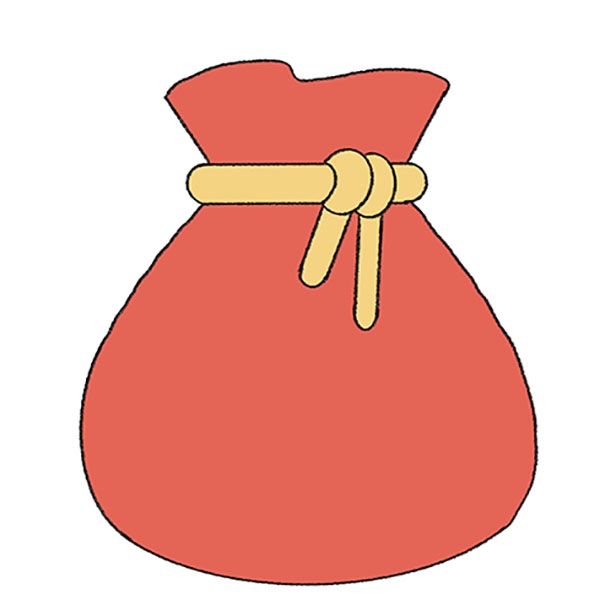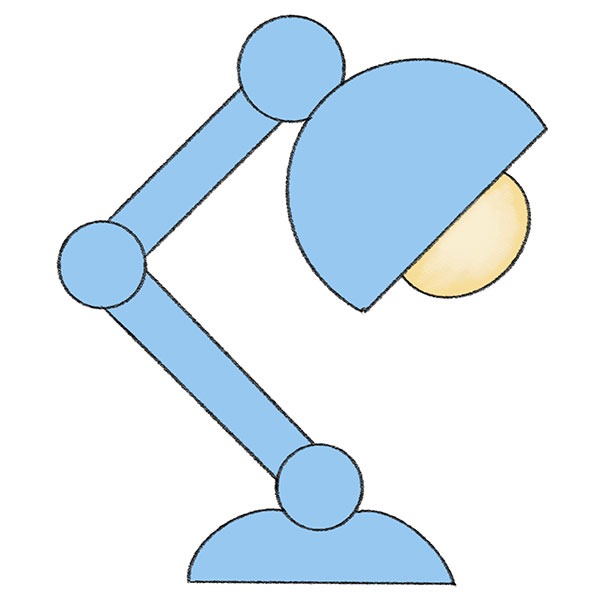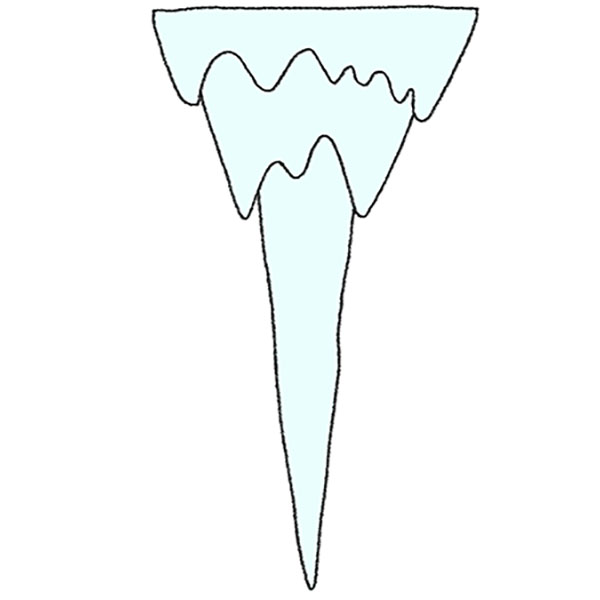How to Draw a Villain
In this lesson, I’ll guide you through the art of crafting a devious character, teaching you how to draw a villain with both charm and malice. This isn’t just about forming any character; it’s about molding the archetypal nemesis with a touch of whimsy, thanks to the chibi style. We’ll be translating complex emotions into easy lines.
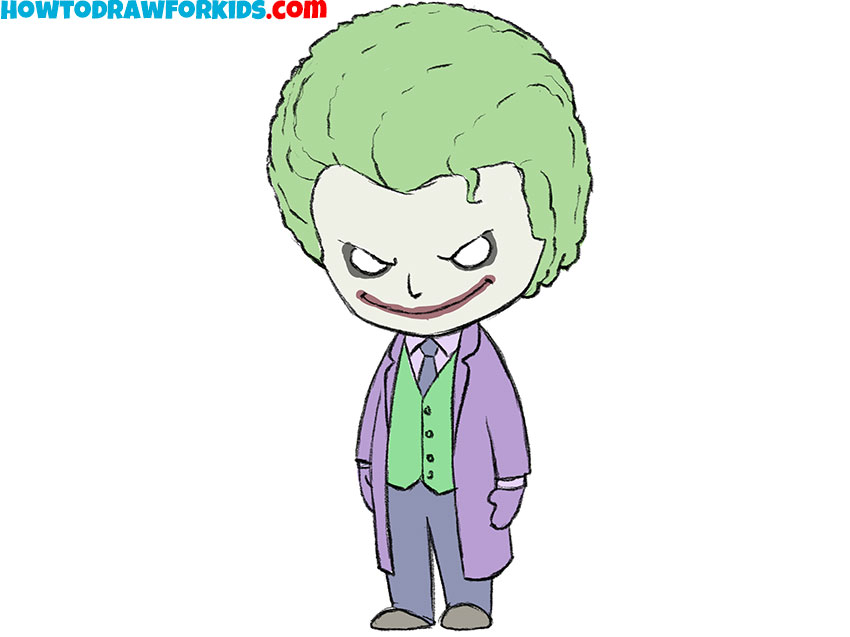
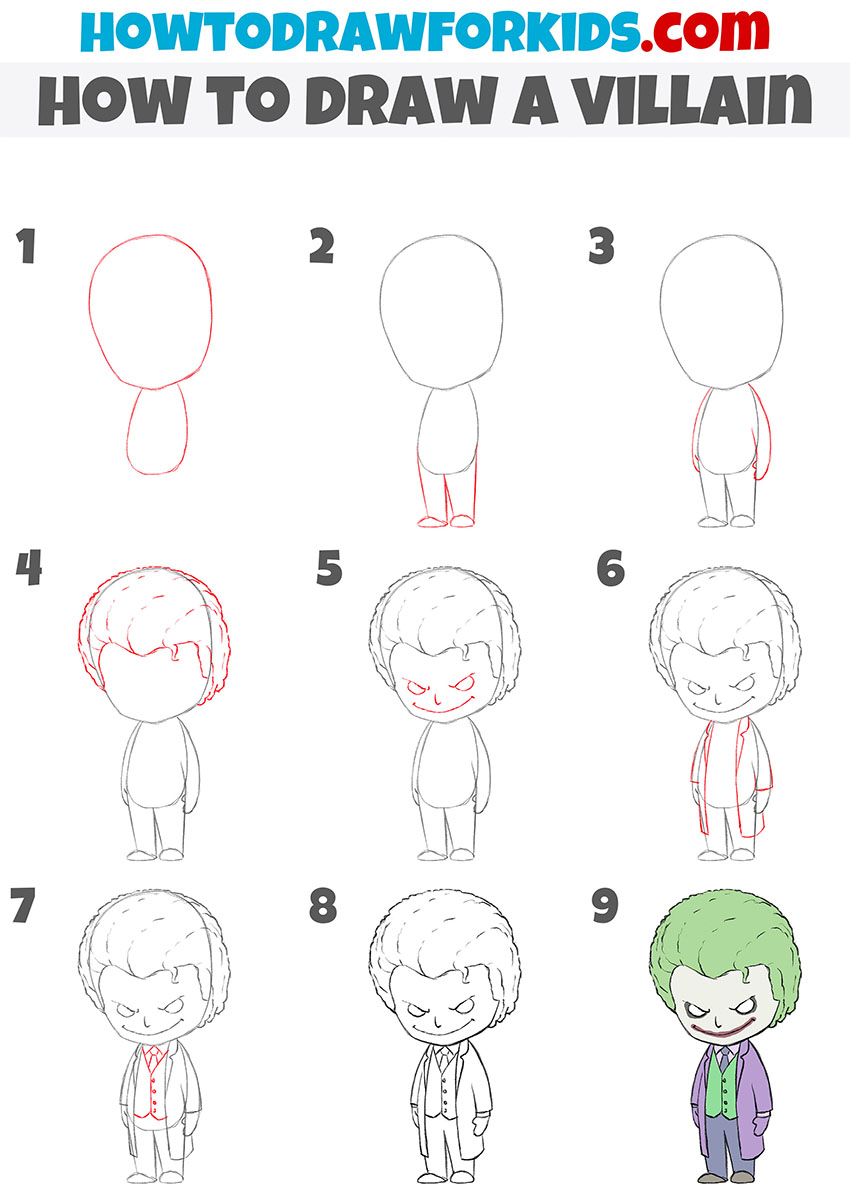
How to Draw a Villain: Basic Information
Embarking on the journey of illustration, I’m eager to share my specialized tutorial on how to draw a villain, inspired by none other than the iconic Joker. The character we’re illustrating may embody the classic traits of this arch-nemesis, but through the lens of chibi artistry, his features become a playful exercise in creativity.
This lesson hinges on exaggerating the Joker‘s trademark features – his wild hair, the insidious smile – all while keeping the simplicity of the chibi aesthetic. I’ve tailored each step, allowing you to slowly build the villain’s character. You’ll learn to portray the dichotomy of his madness and charisma without losing the innocence inherent to the chibi style.
By the end of this guide, you’ll not only master how to draw a villain like the Joker but also grasp the delicate art of transforming infamous traits into endearing chibi characteristics. This process is designed to bolster your confidence and add a notorious yet adorable villain to your artistic repertoire.
Villain Drawing Tutorial
Materials
- Pencil
- Paper
- Eraser
- Coloring supplies
Time needed: 40 minutes
How to Draw a Villain
- Sketch the head and torso of the villain.
Sketch an oval for the head, connected to the oval for the torso. This step is about establishing the basic structure of the character.
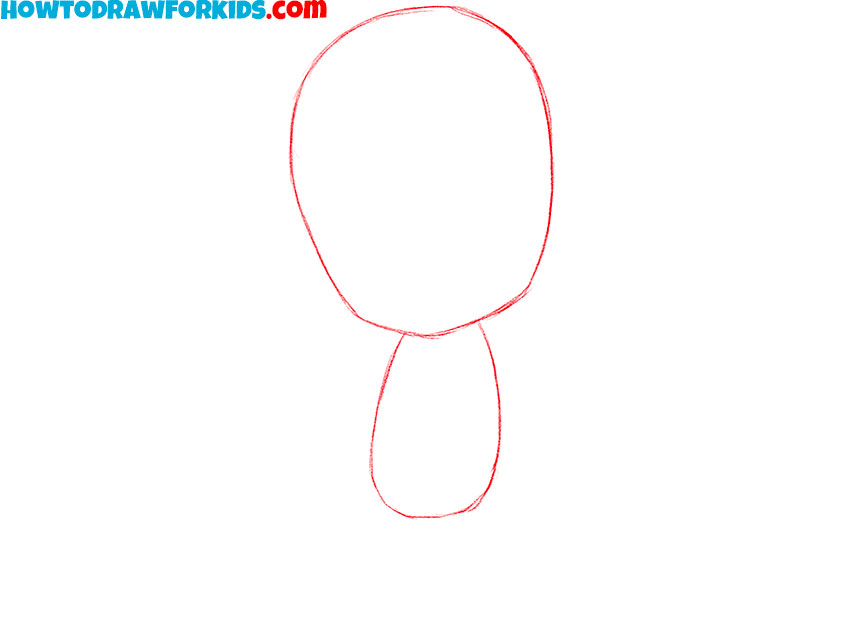
- Draw the legs.
Draw the villain’s lower limbs with two simple lines beneath the torso, carefully positioning them to provide a stable base for the character’s stance, which is crucial for the overall posture of the villain.
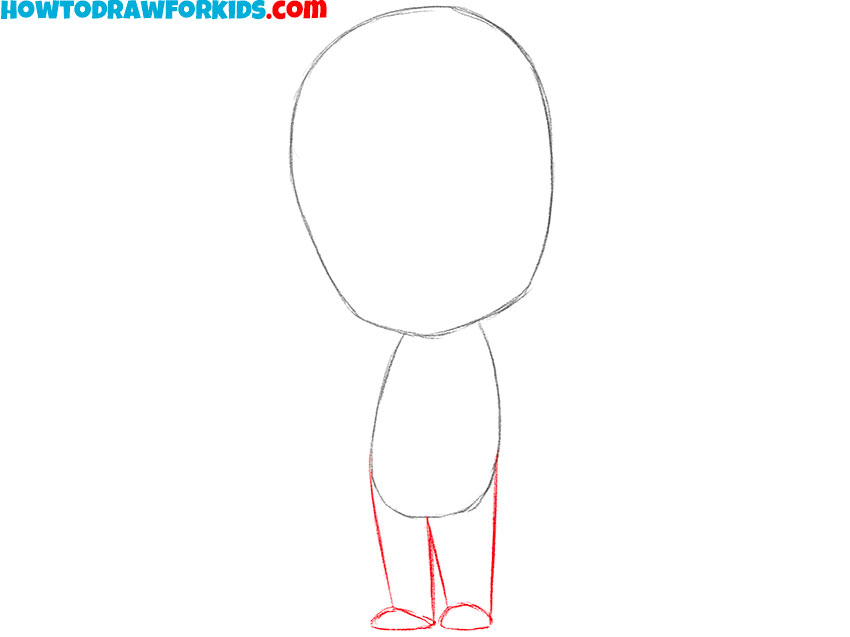
- Draw the arms of the villain.
Illustrate the arms with gently curved lines on either side of the torso. Using very simple lines draw the hands as shown in my example.
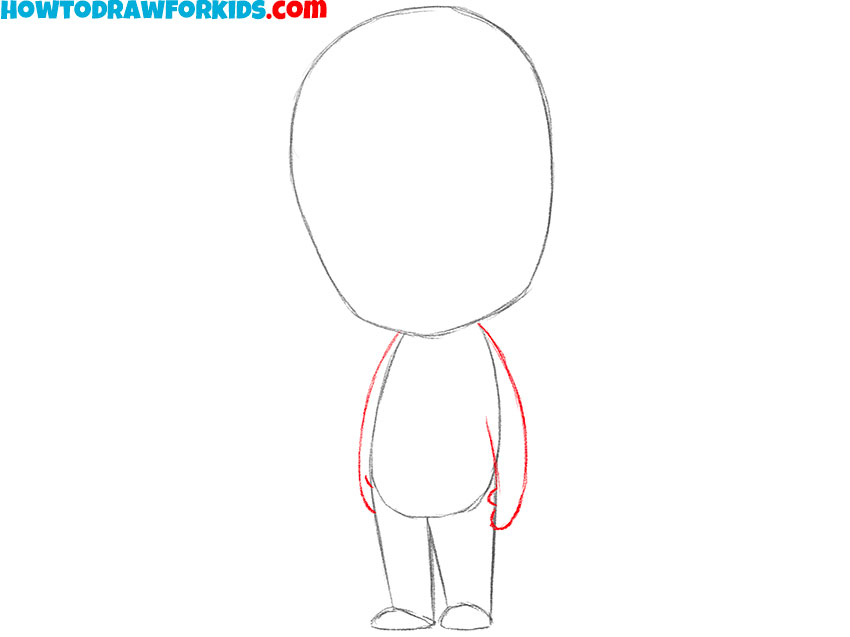
- Draw the hairstyle.
Add the hairstyle, which plays a key role in shaping the villain’s identity. Sketch a bold, wavy outline that adds personality to the character
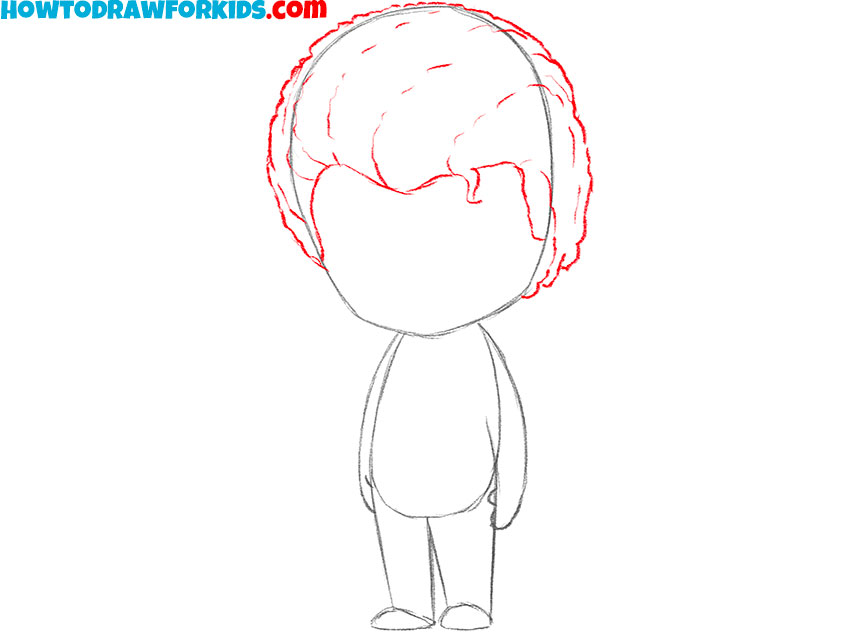
- Detail the face of the character.
Draw two menacing eyebrows angling downwards, small, piercing eyes, and a frowning mouth to convey a malevolent personality. Add creases or other details to accentuate their wicked expression.

- Add the coat.
Sketch the villain’s coat, starting from the shoulders and flowing down on each side. Include indications of the coat’s collar and the way it hangs on the body.
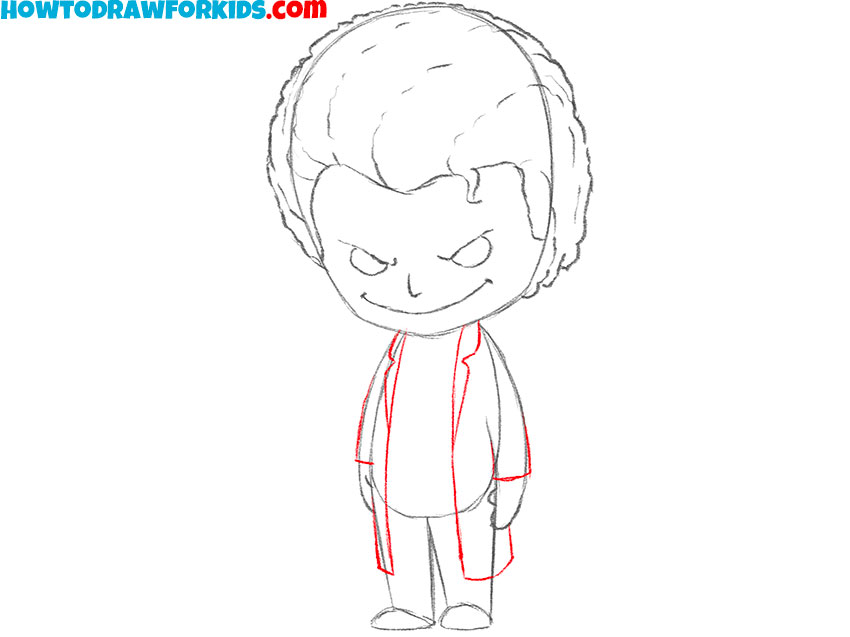
- Detail the clothes of the character.
Add intricate details to the clothing, such as a crisp shirt collar, a decorative tie, and the distinct lines of a waistcoat under the coat.

- Erase the initial guidelines.
Now, remove all the preliminary sketches, erasing the guidelines you initially drew. This will leave you with the clean, sharp lines that define your villain, setting the stage for the final step.

- Color your villain drawing.
Apply color thoughtfully: choose a palette that reflects the villain’s personality, perhaps with a green or purple to suggest a classic comic book antagonist’s attire.
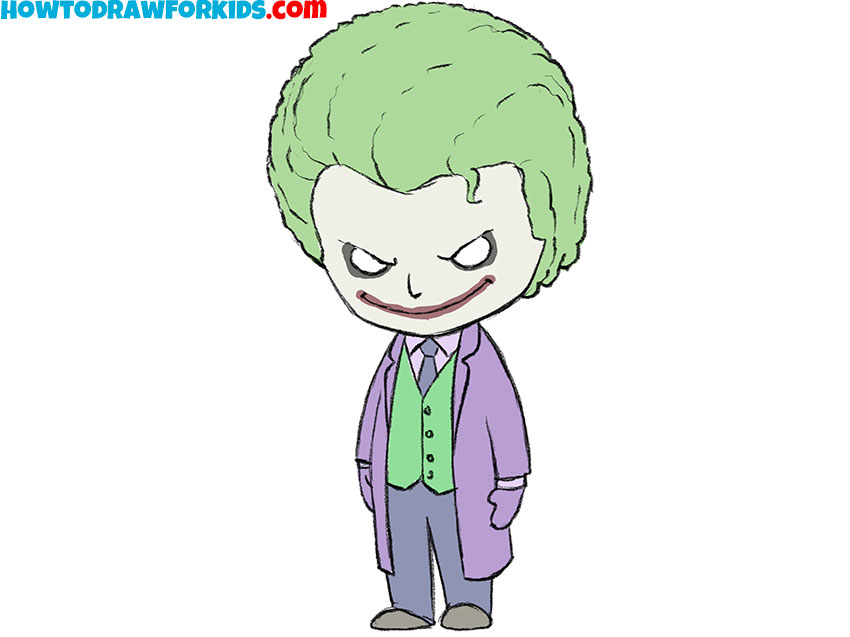
How to Draw a Villain: Video Tutorial
Additional Content
To complement your artistic development, I’ve created a succinct, free PDF file for this drawing lesson. It’s easily downloadable, giving you the flexibility to hone your skills even when you’re offline. While it doesn’t contain the step-by-step guidance, it’s filled with enriching content to advance your abilities after you’ve tackled the basics.
The PDF serves as a rich supplement, providing you with additional exercises and techniques to refine the nuances of your artwork. It’s designed to take you beyond the lesson, offering creative challenges to further your exploration of drawing a chibi-style villain like the Joker.
Utilize this resource to push your art forward, practicing and perfecting the details that will make your characters come alive. This additional material is there to support your journey from a foundational understanding to a more nuanced execution of chibi art and villainy.
Insider Tricks for Your Villain Artwork
In the artistic quest to capture the essence of a villain like the Joker, it’s the subtle touches that breathe life into our creations. Beyond the structured steps of our lesson, there exists a realm of tips and tricks, small yet powerful, that can elevate your chibi Joker from a drawing to a character with soul.
- Contrast is Key: Play with contrasts to highlight the dichotomy of the Joker’s persona, using a stark juxtaposition of colors and shading to bring out his chaotic nature in the chibi form.
- The Smile Says It All: His infamous grin should be the focal point; practice varying the curvature and depth to capture his menacing cheerfulness.
- Hair with Flair: Don’t hold back on the volume and flow of the villain’s hair. Wild, untamed locks can add movement and an element of unpredictability to your drawing.
- Eyes are the Windows: Even in chibi form, the eyes can convey madness or mischief. Small adjustments to the eyes can change the entire mood.
- Suit Up: The Joker’s attire is iconic. Even simplified, the right choice of colors and patterns can signify his character immediately, even to the untrained eye.
- Subtlety in Expression: Chibi characters may seem simple, but a slight tilt of the head or a hand gesture can convey a narrative and add depth to your villain.
In weaving these strands of wisdom into your tapestry of art, may you find joy in each stroke and pride in your evolving skill. These tips and tricks are shared not just to conclude our lesson, but to serve as stepping stones for your continued journey in the art of illustration.
Essential Villain Drawing Questions Addressed
In the spirit of continued growth and shared knowledge, I’ve compiled a list of frequently asked questions that might echo your own as you journey through the world of chibi villainy. Let these answers be the signposts that guide you further down your creative path.
- Can I add props to my chibi Joker drawing? What would you recommend? Certainly! A playing card or his notorious flower lapel can add context; remember to simplify these items to match the chibi aesthetic.
- My villain’s expression doesn’t look quite right. How can I fix it? Often, it’s the eyes and mouth that need tweaking. Adjust their curves and angles to refine his expression.
- Is it easier to start with a digital drawing for chibi characters or should I stick to paper? Both mediums work well, but digital may allow for more forgiving error correction, which is helpful for beginners.
Remember, every question you ask is a light shone on the path to understanding. Each one propels you forward, toward a future where your hands are more sure, your eyes keener, and your interpretations of even the most twisted chibi villains are imbued with life, depth, and a touch of playful menace.
Conclusion
Concluding our journey through the art of chibi villainy with the Joker, I hope you’ve found joy and challenge in equal measure. My website awaits with a treasure trove of lessons on a myriad of subjects, from the majestic strokes needed to bring a Chinese dragon to life, to the delicate details that define an axolotl‘s charm.
To ensure you’re always in the loop with the latest artistic adventures, follow me on social media. This way, you’ll never miss an update or a new lesson that could ignite your next artistic endeavor.If there’s a particular subject or character you’re itching to draw, drop a comment below. Together, let’s continue to grow this vibrant community of artists.

